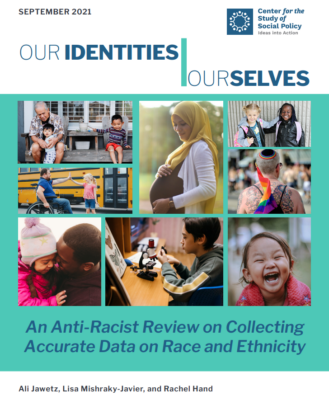Supporting the First 1,000 Days of a Child’s Life: An Anti-Racist Blueprint for Early Childhood Well-being and Child Welfare Prevention

This blueprint provides states and communities – specifically early childhood system leaders and early childhood-serving, community-based organizations – with principles, strategies, and guiding questions to advance efforts to build and enhance a continuum of supports for children prenatal to age 3 and their caregivers. The blueprint also outlines opportunities for states and jurisdictions to take an anti-racist approach in their efforts to support child well-being and prevent child welfare involvement. While the blueprint is intended to be used as a guide for states and communities, each strategy must be adapted to local context to ensure fit and success in implementation.
The continuum of supports for children prenatal to age 3 and their families outlined in the blueprint is organized into three sections: universal supports for all children and families (primary prevention); specific supports for children and families who experience additional factors such as poverty (secondary prevention); and targeted supports for children who become known to deeper-end public systems like child welfare (tertiary prevention). While no state or jurisdiction has implemented a comprehensive continuum of support, the collective examples from states and jurisdictions provide a picture of what a comprehensive continuum could look like and opportunities to advance both equity and anti-racist strategies within the continuum.
Key Sections of the Blueprint
- Guiding principles that must be in place to successfully implement comprehensive strategies that advance health and well-being and prevent abuse or neglect for children prenatal to age 3
- A discussion of strategies and state examples that contribute to the continuum of supports by providing universal, specific, or targeted supports
- Guiding questions for states and communities looking to engage in the process of building or enhancing a continuum of supports
- Potential federal funding streams that are available to finance efforts along the continuum





